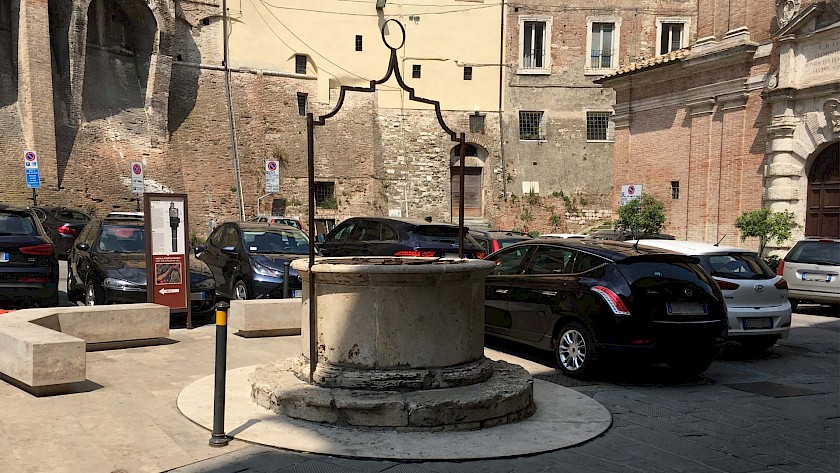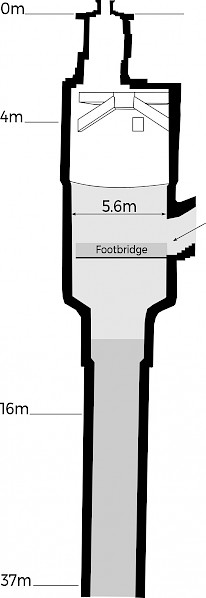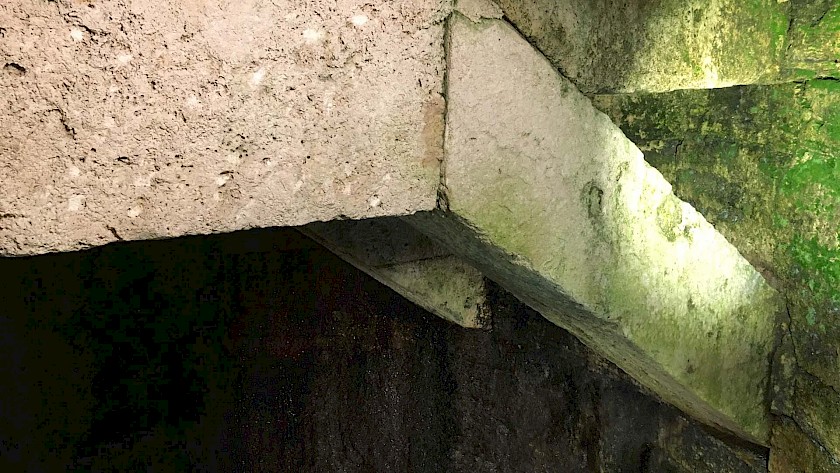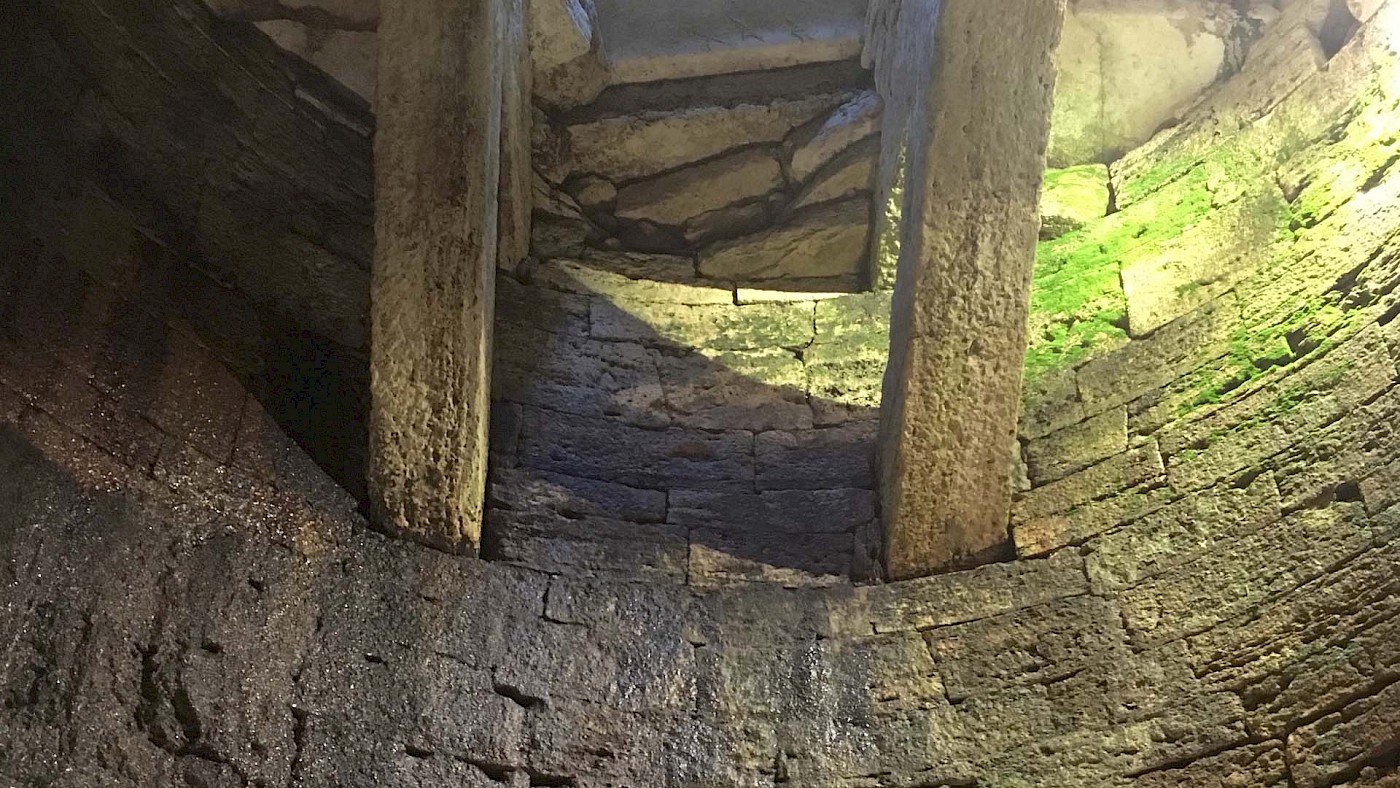Located on the Piazza Piccinino, in the upper town of Perugia, is the top of a well. It’s known as the Sorbello Well, named after the aristocratic family that once owned the building that was built partially on top of it. This visible part of the well dates to the modern era, going back to the sixteenth century, with later restorations.

The well is also known as the Pozzo etrusco or the “Etruscan well”. That’s because the Etruscans are thought to have originally dug the well in the second half of the third century BC, after which it continued in use throughout the rest of the ancient and medieval periods.
Modern tourists can visit the ancient, underground portions of the well via the entrance on Piazza Danti no. 18. The well extends to around 37m below ground level. The main cistern of the cylindrical well, which starts about three meters or so below the modern ground level, has a diameter of about 5.6m at its widest point.
The top portion features travertine blocks, with massive truss beams at the very top supporting the “roof” of the well (i.e. the street level). According to the visitors’ centre, each of these travertine truss beams weighs an impressive 8,000kg. None of the beams or stone blocks are fixed in place with mortar. In short, the well is an impressive piece of ancient engineering.

In ancient and medieval times, the well was an important source of water for the town. It’s still fed by three veins of water. The interior is quite humid, with water dripping from the walls and ceiling. The entrance therefore features a sign that rightfully warns visitors that the steps down to the well are slippery. Mind your footing!
Modern visitors can get to the lower portion of the wide upper section of the well. There’s a glass footbridge here that spans the diameter of the well, affording an excellent view of the interior of the well. Looking up, you can see the travertine truss beams and the opening of the top of the well on Piazzo Piccinino. If you look down, you can see the level of the water, with coins thrown in by tourists lining the edge of the more narrow section.

The site has its own website, with information offered in both English and Italian. To reach the site, you’ll have to park your car at one of the parking garages located outside of the upper town proper and take an escalator or walk to the inner city.
